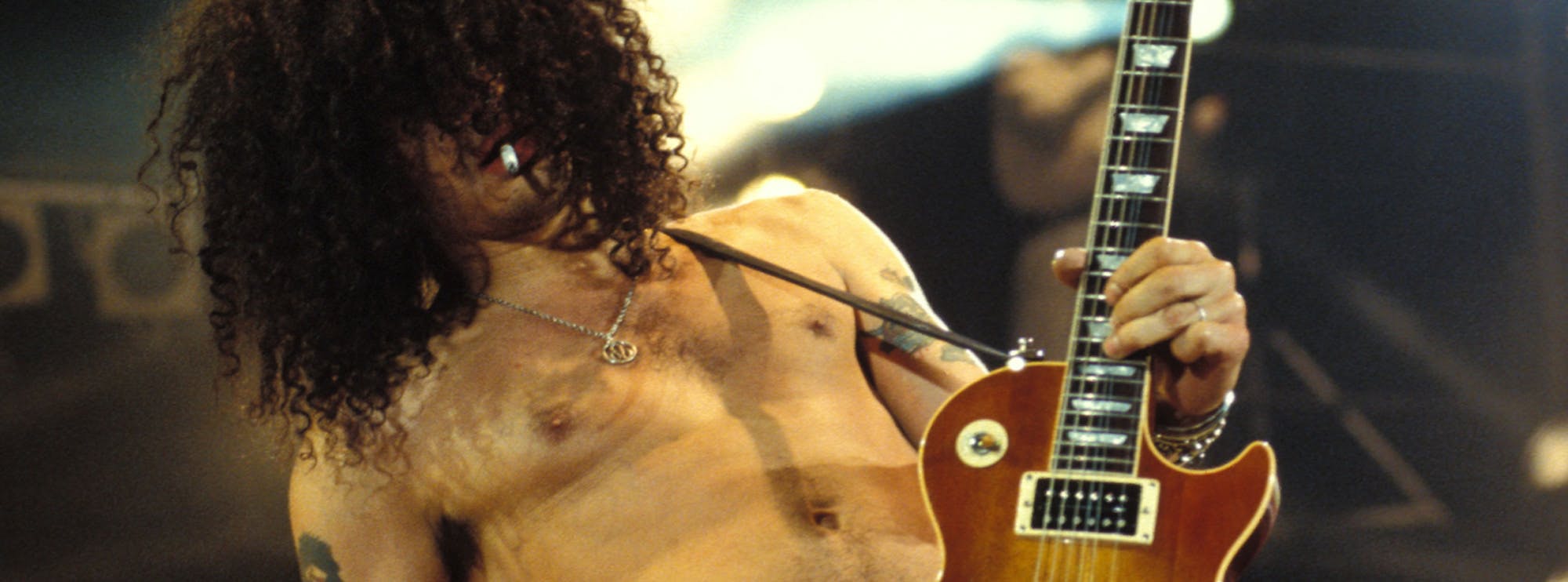'Tears Don't Fall' by Bullet For My Valentine
Bullet For My Valentine's "Tears Don't Fall" is one of the defining songs from the metalcore era, known for its combination of aggressive riffing, intricate lead guitar work, and melodic, emotional intensity. At LickLibrary, our note-for-note guitar lesson of this iconic track is designed to break down every technique and passage in the song, providing you with a deep understanding of the skills involved and how to apply them to your own playing. Andy James breaks down this classic track in this exclusive Lick Library video tutorial.
Overview of "Tears Don't Fall"
The song features a wide array of guitar techniques that range from fast alternate picking to complex lead parts using harmonics and bending techniques. Throughout the track, both rhythm and lead guitars blend to create an engaging dual-guitar harmony, giving the song its signature sound. In this lesson, you’ll learn how to play all these parts with accuracy, focusing on developing the specific techniques that help drive the song’s emotional and technical depth.
Matt Tuck and Michael "Padge" Paget - The Guitarists
Matt Tuck (vocals, rhythm guitar) and Michael "Padge" Paget (lead guitar) are the driving forces behind the guitar work in "Tears Don't Fall." Known for their ability to blend heavy rhythms with soaring melodies, both guitarists are highly influential in the metalcore and modern metal scenes. Padge's lead guitar style often incorporates high-energy soloing and technical playing, making him an inspiration for guitarists who want to master melodic yet complex solos. Tuck, on the other hand, anchors the song with aggressive rhythm playing that serves as the perfect backdrop for Padge's lead lines.
Together, they create a dynamic guitar interplay that pushes the boundaries of metalcore, blending emotion and technicality. Learning this track not only improves your technical guitar skills but also deepens your understanding of how to create harmonised, emotionally impactful guitar parts.
Key Techniques Featured in This Lesson
Power Chords
The song's driving force lies in its use of powerful and aggressive power chords. These are essential for creating the heavy, distorted tone that defines much of the rhythm guitar in "Tears Don't Fall." Mastering power chords will significantly improve your ability to play rhythm guitar in rock and metal styles, offering you a foundational tool for crafting riffs with a full, thick sound.
Palm Muting
The verses of "Tears Don't Fall" employ palm muting to create dynamic contrast and rhythmic tightness. By learning how to apply palm muting, you’ll gain greater control over your picking hand, allowing for sharper articulation and improved rhythmic precision. Palm muting also adds percussive depth to your playing, giving riffs more punch and clarity.
Alternate Picking
Fast alternate picking is a core component of the song's intricate riffs. Alternate picking helps you develop speed and efficiency, particularly when playing complex rhythms or fast melodic lines. This technique is crucial for metal and rock guitarists looking to increase their speed while maintaining accuracy and clarity.
Pinched Harmonics
The aggressive, squealing tones found in the track's main riff are achieved through pinched harmonics. This technique involves striking the string in a specific way with your pick and thumb to produce a high-pitched, overtone sound. Mastering pinched harmonics will add an extra layer of expressiveness and attitude to your playing, which is particularly useful in metal and rock genres.
Unison Bends
The climactic moments in the song's solo feature unison bends. Unison bends allow two notes to converge in pitch, creating a dramatic tension and release. By learning this technique, you'll be able to inject emotion into your solos, giving them a more vocal-like quality.
Legato Playing
Certain lead lines in "Tears Don’t Fall" use legato techniques, incorporating hammer-ons and pull-offs. Legato playing helps create smooth, fluid melodic lines, improving your ability to connect notes seamlessly. This technique is ideal for fast passages, as it reduces the need for continuous picking and allows for a more effortless flow.
Tapped Harmonics
The song also features sections that utilise tapped harmonics. Tapping adds an element of percussive rhythm to harmonic notes, producing a unique, bell-like tone. Learning this technique will expand your tonal palette and add a more distinctive, experimental sound to your solos and melodies.
Dive Bombs with Whammy Bar
In true metal fashion, the solo sections feature dive bombs using the whammy bar, creating dramatic pitch dives that intensify the emotional impact of the song. Mastering this technique adds a wild, expressive element to your playing and can be used to emphasise key moments in solos.
Dual Guitar Harmonies
One of the standout features of "Tears Don’t Fall" is its use of dual guitar harmonies. This technique, where two guitar parts are played in harmony, creates a rich, full sound. Learning how to harmonise effectively with another guitar will greatly enhance your understanding of melody and harmony, making your lead playing more dynamic and complex.
Benefits of Learning These Techniques
By focusing on these specific techniques, you will not only be able to play "Tears Don’t Fall" note-for-note, but you'll also sharpen your overall guitar skills. Each technique has real-world applications in various styles of music beyond metal. Learning how to execute power chords and palm muting will strengthen your rhythm playing, while mastering pinched harmonics, unison bends, and dive bombs will give your solos more expressive power. These techniques are the building blocks of professional-level guitar playing, and practicing them in the context of a real song helps solidify your understanding of their musical value.
Guitar Techniques Used in "Tears Don't Fall"

About The Tutor
Tutor Profile
Andy James
Andy James needs little introduction as one of the most popular LickLibrary tutors, respected the world over for his unbelievable technical skills and teaching material. "As a player Andy has released a string of solo albums, the last being 2012's ""Andy James"" on Transcend Music which was met with huge...



